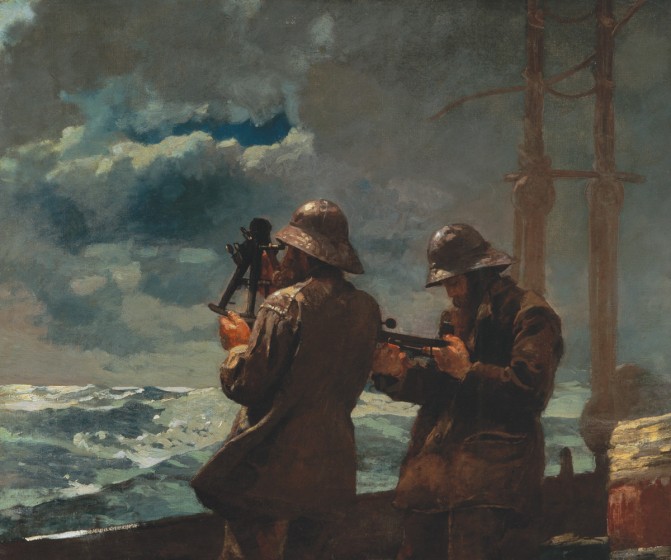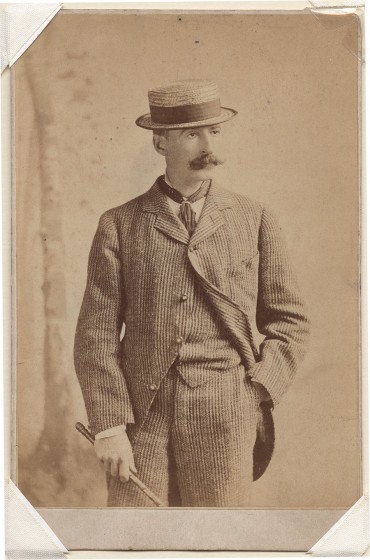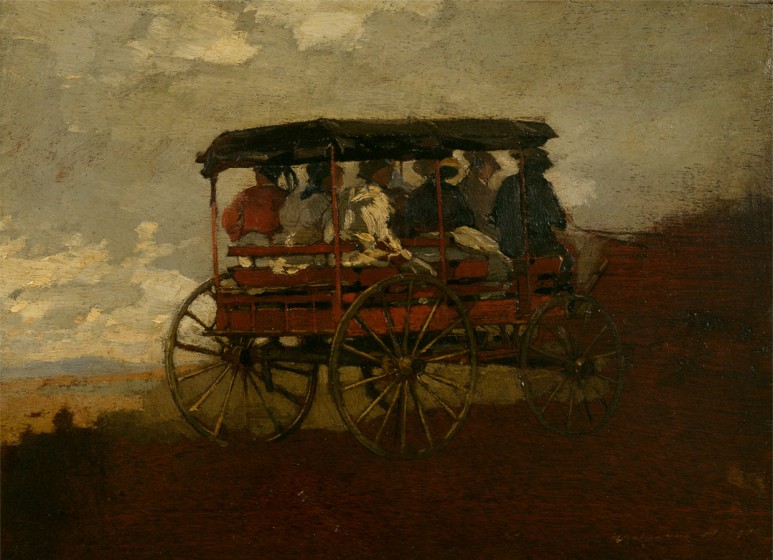A little-recognized aspect of the work of Winslow Homer—one of America’s most iconic artists—is the relationship between his painting and photography, and the role of the relatively new medium on his approach to image making. In 2014, the Bowdoin College Museum of Art (BCMA) was given an English-made camera that once belonged to Winslow Homer. This object was a catalyst for Winslow Homer: Photography and the Art of Painting, an exhibition organized by BCMA Co-Director Frank H. Goodyear and Bowdoin College Assistant Professor of Art History Dana E. Byrd. The Brandywine River Museum of Art was the exhibition’s second and only other venue.
Winslow Homer: Photography and the Art of Painting examines the roles photography played in Homer’s evolving artistic practice. As a young artist for Harper’s Weekly during the Civil War, Homer utilized photographs as source material for some of his drawings. Alexander Gardner’s famous photograph of Lincoln’s first inauguration, for example, provided Homer with the pictorial information he needed to construct his own detailed view of the event. For his Civil War paintings, such as Sharpshooter (oil on canvas, 1863), graphic war photography helped him to think more deeply about what he’d seen, and about how to combine personal sight and engagement with a wide range of sources for composition development.
After the Civil War, Homer traveled to locations in the eastern United States that were becoming popular as tourist destinations--the White Mountains of New Hampshire, the Catskills and Adirondacks of New York, and Cape Ann in Massachusetts. He was introduced to a new type of photography—imagery to promote tourism. These images captured a moment in time and effects like glare, blur and shadow that the eye might not perceive. The strikingly sunlit wagon-wheel spokes Homer painted in The White Mountain Wagon (oil on panel, ca. 1869), for example, suggest that he understood that photographic images could provide fresh, immediate perspectives that he could incorporate into his paintings.
During the last three decades of his life, he often created compositions of the same subject in different mediums including printmaking and photography, a cross-fertilization that came from his long interest in probing the way things look and the challenge of portraying them realistically. To paint The Artist’s Studio in an Afternoon’s Fog (oil on canvas, 1894), Homer borrowed certain elements—the cropping, the blur of the background, and the flatness of the composition—from photographic views of his studio, yet the painting, based on a unique optical experience, is an artistic creation reflective of myriad decisions. To Homer, paintings had the potential to make a subject more clearly understood than by sight alone and photography could complement and expand his desire to accurately depict what he saw.
Throughout his career, Homer was conscious of the public persona he projected through photographs of himself. The exhibition also considers a series of portrait photographs by Bautain Studio, Napoleon Saroney, Peter Juley and others which served to illustrate the artist’s increasingly growing reputation.
Winslow Homer: Photography and the Art of Painting is drawn from the BCMA’s incomparable holdings of Homer’s art and archival materials, and from more than twenty major lending institutions, including the Addison Gallery of American Art, the Cooper Hewitt National Design Museum, the New Britain Museum of American Art, the Portland Museum of Art, and the Wadsworth Atheneum. The exhibition features approximately fifty photographs created or collected by Homer and approximately fifty paintings, prints, watercolors, and drawings from all major periods of the artist’s career. A selection of the artist’s Civil War-themed images and work from his activity in the Adirondacks, England and Prout’s Neck were considered in relation to Homer’s interaction with photography. A catalogue published by Yale University Press accompanies the exhibition.
Winslow Homer: Photography and the Art of Painting is organized by the Bowdoin College Museum of Art.
Major support for this exhibition is provided by Linda L. Bean, the Robert J. Kleberg Jr. and Helen C. Kleberg Foundation, the Davenport Family Foundation, William C. and Laura Buck, and Bank of America.



